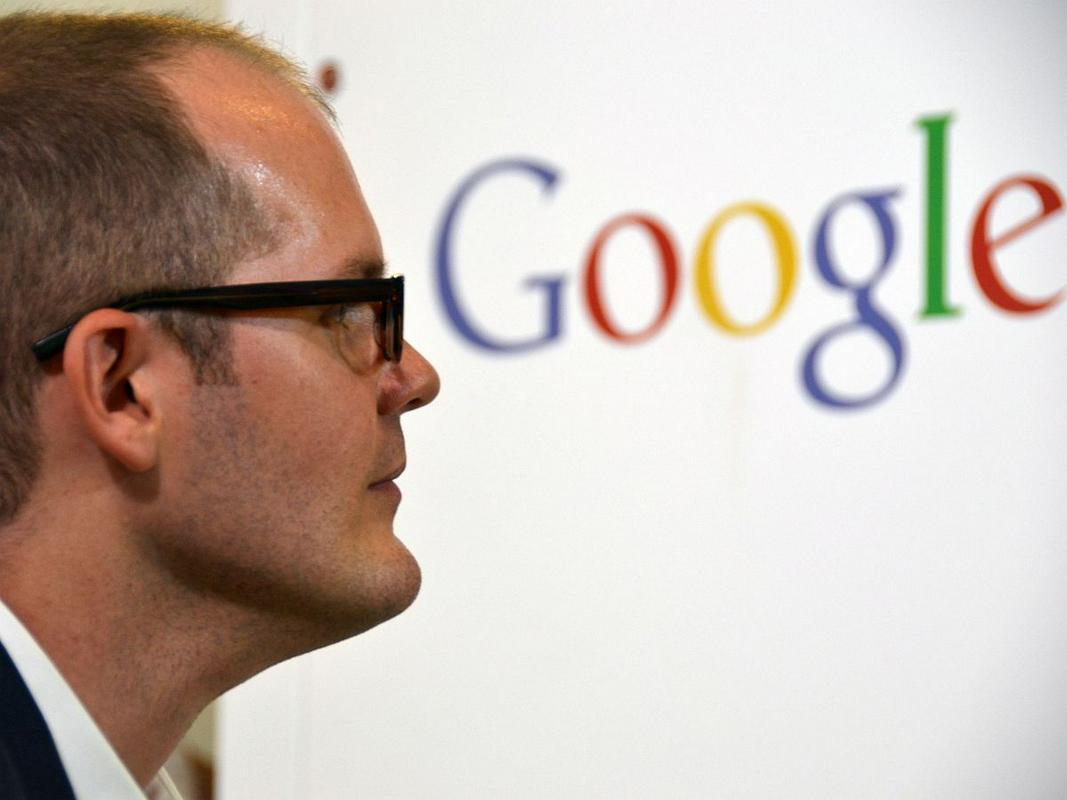
Access to information improves people's lives.

Only 39 percent of the world's population currently has access to the internet. How about all the others? How can we let them access all the information that you and I take for granted, to send e-mail, to share photos with friends and families?

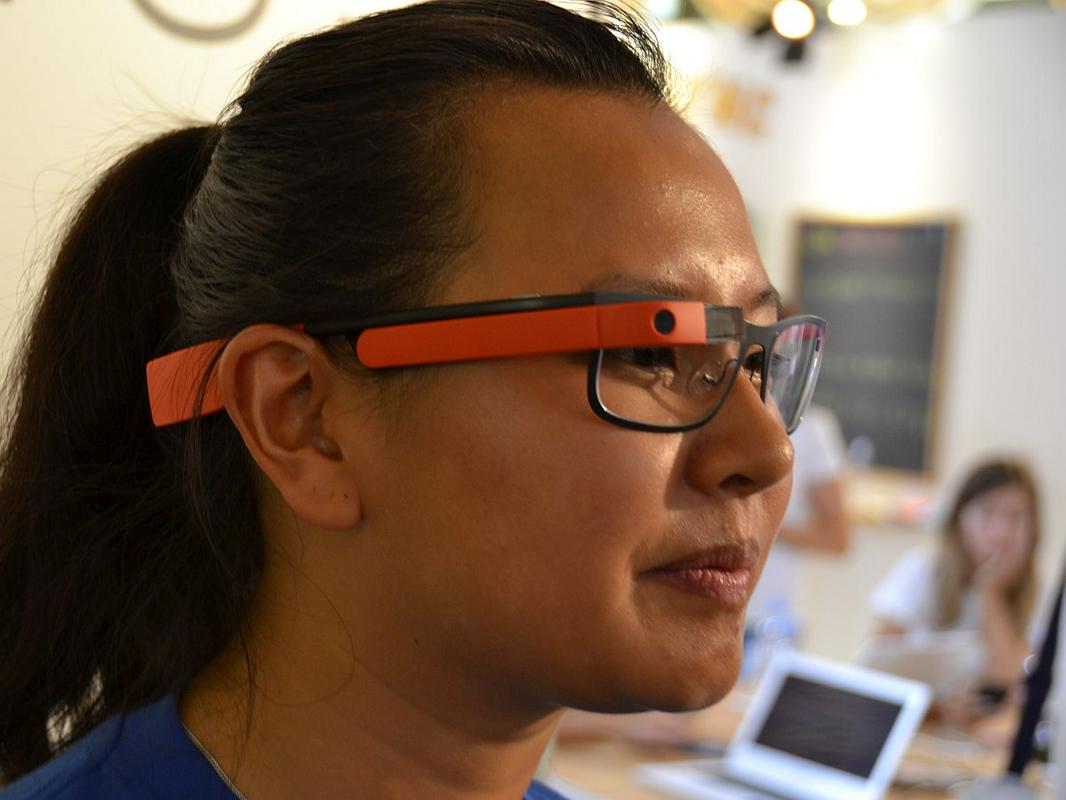
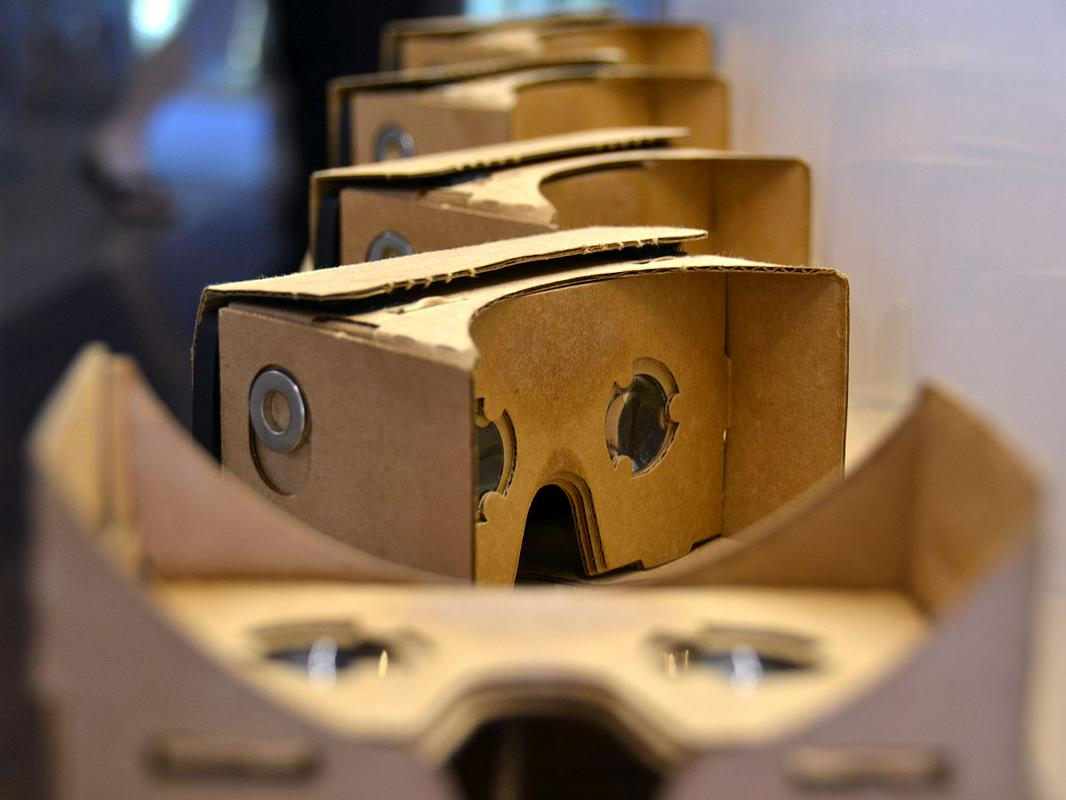
Every moment of every day I have this device on me [shows his smartphone]. This may not even exist in half a century. It could be in my watch, in my glasses, or even in my contact lens.
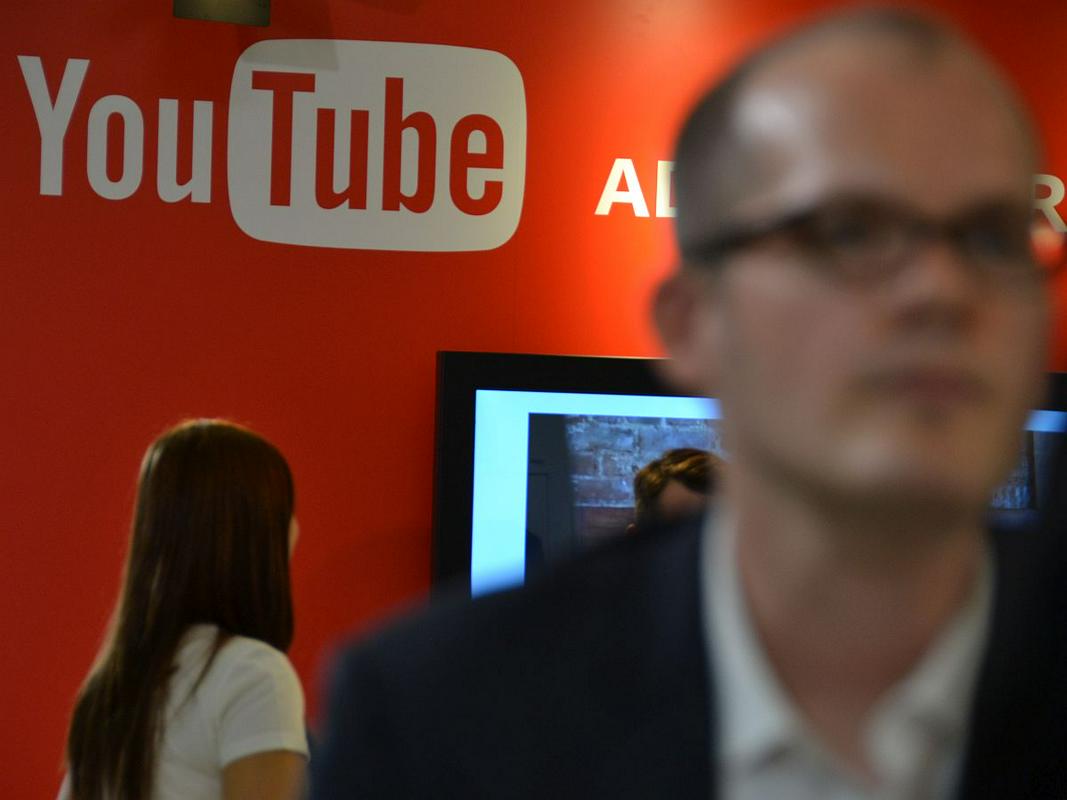
I would absolutely say, art can be advertising and advertising can be art. Specifically, when we use the word “Art” in our program title “Art Copy & Code”, we are referencing the traditional creative agency disciplines of art direction and copywriting. Today, we believe there is a third skill that is increasingly important – coding.
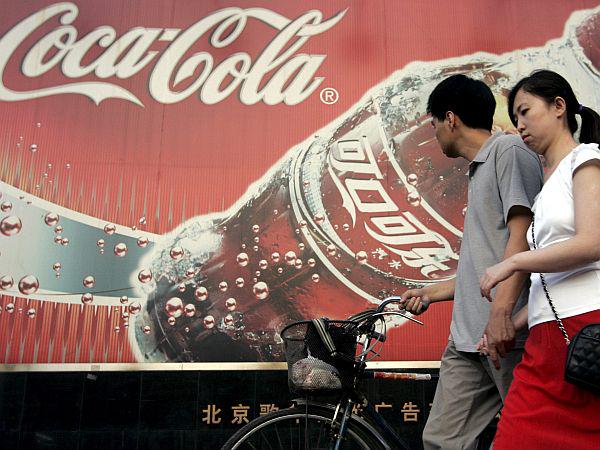
We met a Kenyan potato farmer whose crops were dying for some unknown reason. He uses Google Search to find a solution – spreading wood ash on his crops that stopped the bugs – and was able to get his crops growing again.
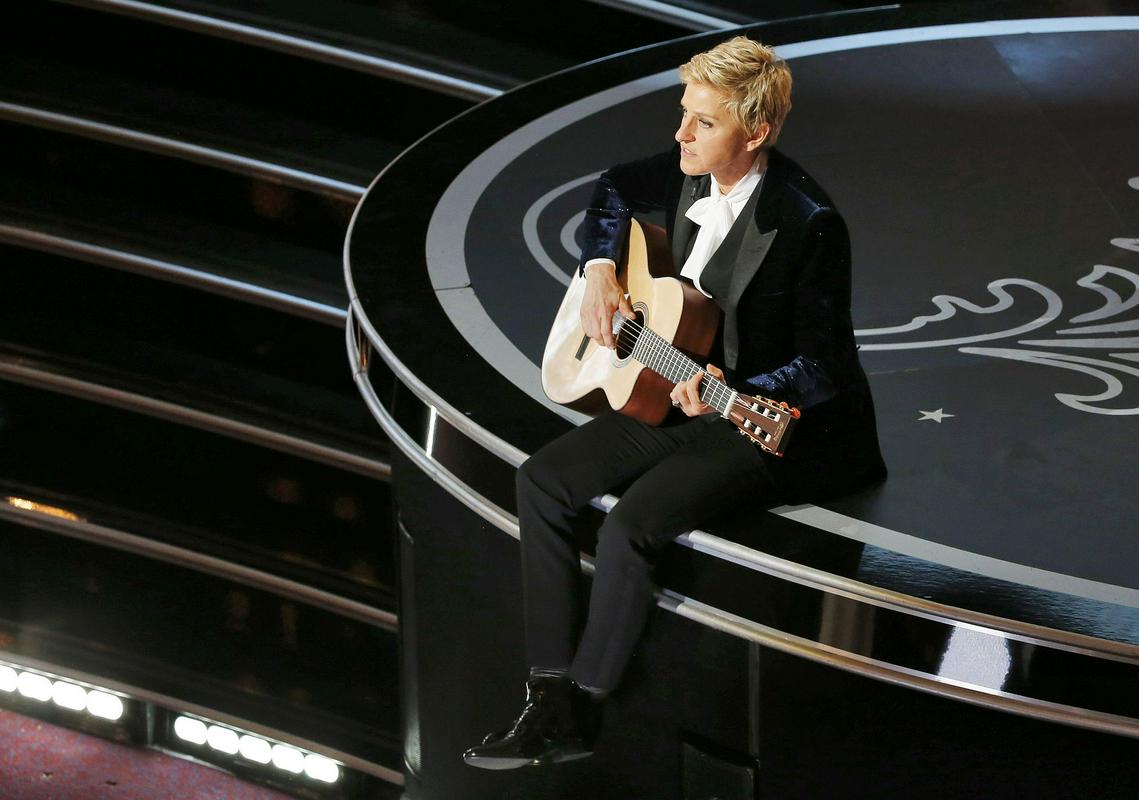
It is those special moments in time, when something happens on the TV and the web lights up.
Google's logo is reflected on people's eyes at least five billion times a day. It represents a company of superlatives, boasting dominating positions in the internet industry and daring inovations also in the more earthly, physical field.
The Google Search engine has long been number one and Chrome, the internet browser along with Gmail for e-mail services, recently follow the same path. At the same time it has been no secret, that while these tools are very user friendly, they are also a tool for Google to collect masses of valuable information. These are, among other uses, basis for improved advertising, main source of Google's income.
The Mountain View (USA) based company has started countless projects, and prominent among those connected to advertising is the Art Copy & Code; led by Google's marketer Mike Glaser. He tries to connect Google with other big brands, such as Nike and Volkswagen, and see wether the brands can use some innovative techiques and programming in order to connect and communicate with the consumer.
MMC has conducted an interview with Glaser on the Portorož based advertising festival Golden drum. There, the company offered testing of some of their products (author's commentary is located in the right hand side column).
_____________________________
Mr. Glaser, you work for an unprecedented company. It has in less than two decades expanded exponentially from basic internet search engine to literally space exploration. It tackles the problems of aging, tries to collect all knowledge of humanity, create maps of everything that exists and spread it using its own laptops. I do not know of any other such undertaking in human history. How do you feel to be a part of this story?
I just love it. I am one of those annoying people that comes to work and loves his job. I bump into people who are working on amazing projects. Google's culture is such that it encourages serendipitous running into other people. Be it in the structure of our cafe's or our organization offices, the fact is, that I can bump into somebody that sits only 50 yards from me, yet he is working on something so vastly different from me. Let us say, using Street View technology to capture art exhibits around the world and bring them to people who cannot go to this museum. Or making a driverless car. That is fundamentally different than what I do from day to day. Being there, meeting them, being able to share thoughts is the intellectual stimulation that makes my job the most fun thing in the world.
We know you work in Google's marketing branch, but what is your role exactly?
I am a part of Google's marketing team on what we call the Creative partnerships group. It is a mixture of marketers like myself, creatives and developers. We work across almost all Google products, like Chrome and YouTube, with a focus in the ads since it is a big part of Google's business. My role is to go out and partner with brands and agencies and build programs that we hope consumers will love and share.
And what is your mission in society as a marketer?
This is a big question. Many of us who come to industry want to leave a positive mark on society. Whether it is search, YouTube or ads, a big thing in Google's marketing is using technology in general to enrich, to add value to people's lives. A lot of what I focus on with the Art Copy & Code initiative, comes to life with brands and agencies through ads and digital experiences.
The reason that I like to do what I do coincides with our goal there: finding opportunities to give the consumer some utility. It can be in the context of the World Cup's big moments: when Brazil scores a goal, we share his name and a piece of Nike content right after it happens.
Or, like the most recent project with Electronic Arts Sports, where we shared the time clock and all the score updates for every national football league game out there, in a way that reflects what people see on TV. And it's fun. It is the type of advertising that, hopefully, makes watching TV more fun and enhances it with right information.
So you see the role of advertising as generally positive, enriching people’s lives. Not all would agree with that.
That is my goal and my hope. Do I think all advertising does that today? No. But more and more, I think brands understand that they cannot just have a one-way dialogue with consumers. Instead, marketing can actually invite a two-way conversation.
Unlike the traditional approach in both still and video advertising, where the viewer basically just watches and takes the message, you build it the other way around. Your ads are participatory, meaning the public can actually take part in the advertising and have an influence on the content. This calls for a revolution, not just in the advertising, but also in art.
In Google, we love data. We recently conducted ethnographic studies in the living rooms of passionate sports fans, observing how they watch American football, hockey or soccer; and what are they doing on their second screen devices. We have learnt that when something important happens on the TV, fans race to their second screens. When a TV commercial airs during the Super Bowl, within seconds - if not minutes - people search for that brand, product and category. When their favourite athlete scores a goal in the World Cup, they search for statistics and backstories.
That is where we as the advertising industry are provided with an opportunity to add value. To provide fans with more content, that is going to make your existing behaviour better, more fun and informative.
The presentational video of your Art Copy & Code project is very interesting. It is generated according to the individual viewer and surprises him. From what I could see, you learn the IP number and therefore the location of the viewer, his local time and weather. This info is relatively easily accessed, but how about the more difficult data? What more can you build your videos upon?
The film is a form of dynamic video that can be powered by a number of different signals. In our version, we used time of day, location and weather to customize it, but brands could use other signals too. If you work in finances, you could incorporate stock prices, for example. If you are a QSR (quick-service restaurant) like Starbucks or McDonald's, you can incorporate the weather to show hot coffee or cold coffee. If you work in retail, I can incorporate a live inventory according or pricing to show what is currently on sale.
You use the word art. But can art be compatible with advertising, when we know that advertising ultimately follows one simple goal: to generate sales and income?
Does it? I would not fully agree with that. I think advertising can serve many purposes, of which generating sales and income is certainly one of them. But advertising is out there to communicate a message. Advertising can be used to raise awareness of a cause, or influence behavior with something like recycling. It is entirely up to the brand and its overall objectives.
There is a reason there is a secondary market for classic ads from the 1940' and 50'. Coca-Cola, one of my favourite brands, has one of the most iconic pieces of advertising out there. But I would be hard-pressed to say if is it advertising or art at this point, when we look at a poster that says "the pause that refreshes" from almost a century ago.
I would absolutely say, art can be advertising and advertising can be art. Specifically, when we use the word “Art” in our program title “Art Copy & Code”, we are referencing the traditional creative agency disciplines of art direction and copywriting. Today, we believe there is a third skill that is increasingly important – coding.
The old art forms - in the main - attack only one or two human senses. A painter paints an image, writer puts down words, musician composes melodies. They very rarely combine in a really efficient way. Meanwhile, your art, at least the direction where it is pointing towards combining multiple human senses at the same time, makes it potentially much more powerful. Furthermore, it incorporates the art consumer as well. Can this way with the help of modern technology render the old and basic forms of classic art halfway obsolete?
That is a very interesting thought. I would like to say that it will not be obsolete. I think art and advertising ultimately impacts consumer emotions. You can listen to Beethoven's symphony that was written hundreds of years ago, has not effectively changed, and it will still drive an emotional response in you. The same happens when you look at Van Gogh or Picasso.
Today we have more tools at our disposal, and that allows us new forms of expressions that were never possible. But the goal is still the same. Can I move you? Can I cause you to feel a certain emotion – happiness or excitement, for example?
I think most creatives would consider their work at the minimum ‘artisitic’ and, by nature, I think all creatives would consider what they do to be ‘art’.
Today you can add powerful images or videos to that Beethoven's symphony, words that complement it, and the limit is only imagination. The original symphony may become much more more powerful with more artistic context. I think Roger Waters has done something in this direction.
I have not yet seen this, but it would definitely be worth testing. I think there is something to be said about enjoying a piece of art as it was originally designed to be consumed – like in the front row of the New York Philharmonic. You hear the orchestra, you see the conductor waiving his or her baton, and you feel the vibration of the double bass in your chest. Sure, you could also just listen to an MP3 and then layer on all sorts of new visual or other effects, build the most immersive multimedia experience, but in essence you are still engaging the same set of five senses.
Maybe it will soon take root in the movie arts. Movies themselves could soon be dynamically generated to build the narrative better depending on who is sitting in the cinema or the screen.
Theoretically, it is possible. I think movie studios have enough insights to know what stories will resonate with which audiences, but before it happens in Hollywood I think it will come to TV. With IP-addressable TV, I do think we will get to the point where 30-second commercial can be fully tailored much like the film I showed here (on the Golden Drum festival), to specific audiences and markets. That is just a matter of connecting the TV infrastructure to the web.
You have cooperated with big brands. With Volkswagen to make every day driving "more fun"; with Burberry so people can send virtual e-cards, sealed with their actual kiss; with Nike to commemorate big World Cup moments, while your EA Sports collaboration introduces the well-known gif memes to advertising. How did these stories develop?
About a year ago, our Art Copy & Code team looking for the big areas that we thought are fundamentally changing the advertising industry. One of those areas is real time marketing. This sort of goes back to the Oreo Super Bowl tweet from years ago, or Ellen's selfie at last year’s Oscars. It is those special moments in time, when something happens on the TV and the web lights up. We are really keen to understand that.
We have seen how big TV moments drive Search and site behavior near instantaneously. We see this a lot for live sporting events, like the Super Bowl, Olympics and March Madness (American university basketball). With the World Cup 2014 coming up, we pondered what might we be able to do with that?
At the same time we bumped into some of our friends at Nike in our headquarters at Mountain View. They said, listen, we are putting together this series of films, maybe there is an area for us to collaborate on. We shared some of our hopes and insights on the real time marketing. From casual conversation, we agreed to explore how we might partner on something new and exciting for the upcoming tournament.
Google likes to push the envelope. At one of your public performances, you asked the audience, what do they think advertising will look like five years from now. I ask you, where will Google take advertising and art 50 years from now? If it will still exist, of course.
Wow. I cannot tell what might happen in the future but in my opinion it will look nothing like today. Let us start with the idea of screens 50 years from now, the idea that we sit in front of a computer eight hours a day, or go home and watch TV four hours a day. Every moment of every day I have this device on me [shows his smartphone]. This may not even exist in half a century. It could be in my watch, in my glasses, or even in my contact lens.
But the concept of communicating a story and engaging the emotions will still be there, just the underlying media will be very different. We cannot even imagine how it will be, even 15 or ten years from now.
Maybe someone will read this interview in 2064 and laugh, what nonsense were we spewing out.
[laughs] We probably will, thanks to the World Wide Web.
Do you think the enhanced reality equipment, like the Google Glass, is set to become the major multimedia content provider in the future?
This is just my opinion. There will be a whole set of innovations over different formats and devices, and each of them will explore the area of enhanced reality. Glass demonstrates some pretty amazing capabilities for a wearable that sits on your nose, but there will be other types of innovations as well. And for us as the industry, it is like a rising tide that lifts all boats; consumers will get better products and services that will help improve lives. I am very, very curious how it will turn out.
In contrast to exponential expansion of Google, Coca-Cola, your previous company, is after a century still mainly dealing with beverages. How was it to work for this soft drink giant?
From my working experience, I have nothing but love for Coca-Cola. I have learnt fundamentals of marketing on a brand that is being sold in more than 200 countries. It was an incredible opportunity. The skillset and people are very similar to people at Google. The difference is, that they focus on a physical product, the supply chain and all the stuff that comes along, versus Google, where they mainly focus on the digital. We still work very closely with Coke.
What is the biggest difference between The Coca-Cola Company and Google, if you focus on corporate culture?
The main difference is in the speed at which the products get released. This difference is more indicative for the goods industry compared to the technology sector. In the CPG (Consumer packed goods) industry, it takes a year or even 18 months to release a new product, because you need to put through all the test, all the R&D, package design, supply chain and the logistics. All of that happens much, much faster in technology. We may only get three months to launch a new product, and when we launch it, it will be in beta phase because we want to learn from our actual consumers, what works and what does not, so we can actively improve it.
Can you select and point out a Google project that is the craziest and most daring at the moment? I don't mean craziest as looniest, but as ...
... [laughs] are you familiar with Project Loon? It came out of our Google X team, our internal innovation lab. Project Loon is a series of balloons, much like hot air balloons, designed with the goal of bringing internet access to parts of the world that do not have the infrastructure like we do. So they are testing these high altitude balloons to broadcast wi-fi, so everyone can connect to the web. It is in its very early days, but a very ambitious and exciting project, because only 39 percent of the world's population currently has access to the internet. How about all the others? How can we let them access all the information that you and I take for granted, to send e-mail, to share photos with friends and families?
Access to information improves people's lives. We met a Kenyan potato farmer whose crops were dying for some unknown reason. He uses Google Search to find a solution – spreading wood ash on his crops that stopped the bugs – and was able to get his crops growing again. For me, access to information allows me to live a happier, healthier life. So I think Project Loon in an incredible step in providing more people access to the web. Things such as these get me excited about coming to work! Google, among other companies, is pursuing that dream.
So it has a bigger mission than just generating sales and income?
A lot, a lot bigger than just generating sales.
Access to information improves people's lives.
Only 39 percent of the world's population currently has access to the internet. How about all the others? How can we let them access all the information that you and I take for granted, to send e-mail, to share photos with friends and families?
Every moment of every day I have this device on me [shows his smartphone]. This may not even exist in half a century. It could be in my watch, in my glasses, or even in my contact lens.
I would absolutely say, art can be advertising and advertising can be art. Specifically, when we use the word “Art” in our program title “Art Copy & Code”, we are referencing the traditional creative agency disciplines of art direction and copywriting. Today, we believe there is a third skill that is increasingly important – coding.
We met a Kenyan potato farmer whose crops were dying for some unknown reason. He uses Google Search to find a solution – spreading wood ash on his crops that stopped the bugs – and was able to get his crops growing again.
It is those special moments in time, when something happens on the TV and the web lights up.





























































